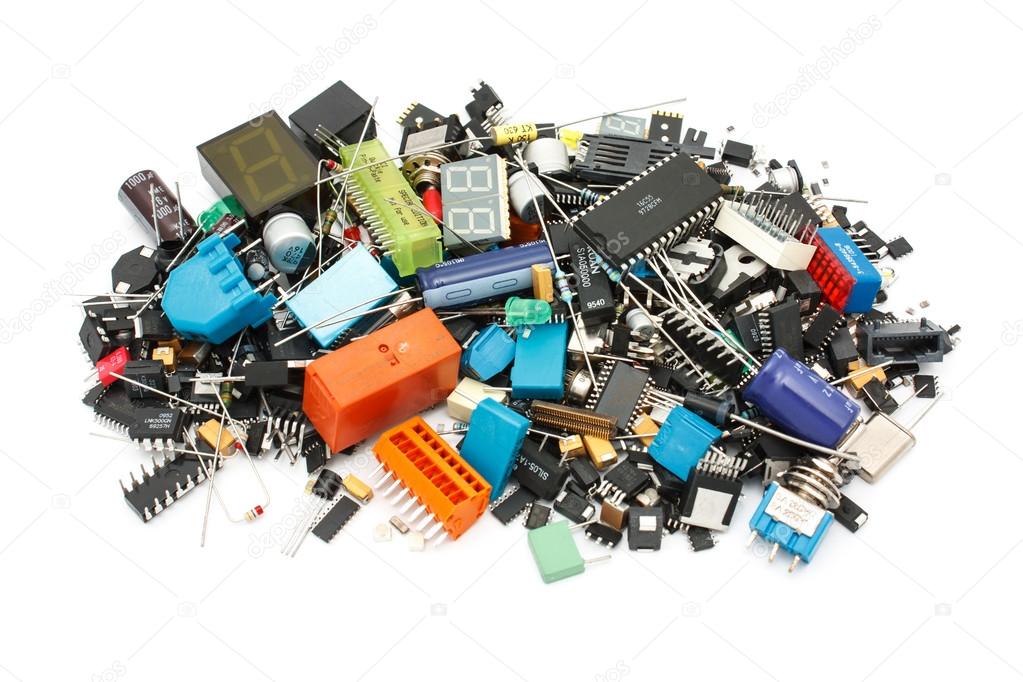Electronic components are the building blocks of modern electronic devices, ranging from smartphones and computers to sophisticated industrial machinery. Understanding the basics of electronic components is essential for anyone working in the field of electronics or simply interested in how electronic devices function. In this article, we will explore some key aspects of electronic components, their types, and their fundamental characteristics.
Resistors:
Resistors are one of the most common electronic components. They limit the flow of electric current and are crucial for controlling voltage and current levels in a circuit. The unit of resistance is the ohm (Ω). Resistors come in various types, including fixed resistors with a constant resistance and variable resistors whose resistance can be adjusted.
Capacitors:
Capacitors store and release electrical energy. They consist of two conductive plates separated by an insulating material. Capacitors are used for smoothing voltage fluctuations, filtering signals, and storing energy in electronic circuits. Capacitance is the measure of a capacitor's ability to store charge and is measured in farads (F).

Inductors:
Inductors store energy in a magnetic field when current flows through them. They are essential components in electronic circuits where energy storage, inductance, and magnetic coupling are required. The unit of inductance is the henry (H).
Diodes:
Diodes are semiconductor devices that allow current to flow in one direction only. They are commonly used as rectifiers to convert alternating current (AC) to direct current (DC). Diodes also play a crucial role in protecting electronic circuits from reverse voltage and are key elements in light-emitting diodes (LEDs).
Transistors:
Transistors are semiconductor devices that amplify or switch electronic signals. They are the building blocks of modern electronics and can be found in various configurations, such as bipolar junction transistors (BJTs) and field-effect transistors (FETs). Transistors are fundamental to the operation of electronic devices like amplifiers, computers, and digital circuits.
Integrated Circuits (ICs):
Integrated circuits, or ICs, are miniaturized assemblies of electronic components (such as transistors, resistors, and capacitors) on a single semiconductor chip. They can perform complex functions and are the backbone of modern electronic systems. Microprocessors, memory chips, and operational amplifiers are examples of integrated circuits.

Resistors, Capacitors, and Inductors in Circuits:
Understanding how resistors, capacitors, and inductors interact in circuits is crucial. Resistors control current, capacitors store energy, and inductors store energy in a magnetic field. Circuits often combine these components to achieve specific functions, such as filters, oscillators, and amplifiers.
Temperature and Tolerance:
Electronic components are sensitive to temperature variations. It's essential to consider the operating temperature range for each component. Additionally, components have tolerance values, indicating the allowed deviation from their nominal values. Engineers and designers must account for these factors to ensure reliable and stable circuit performance.
Static Electricity and ESD Protection:
Electronic components are susceptible to damage from static electricity. Proper handling procedures, such as using anti-static mats and wrist straps, are crucial to prevent electrostatic discharge (ESD) damage. ESD protection is especially critical when working with sensitive components like integrated circuits.
Obsolescence and Availability:
The electronic components market is dynamic, and some components may become obsolete over time. Engineers and designers need to consider the availability and lifecycle of components when designing electronic systems to ensure long-term viability and maintainability.
Conclusion:
Understanding the fundamental characteristics and functions of electronic components is essential for anyone involved in electronics, from hobbyists to professionals. Whether you're designing circuits, troubleshooting electronic devices, or simply curious about the technology that powers our modern world, a solid grasp of electronic components is the key to success in this dynamic field.



